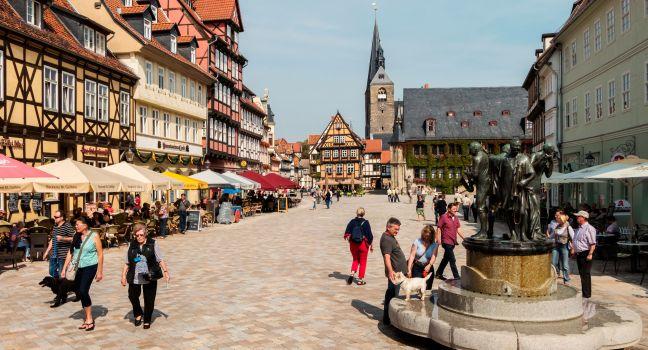Finkenherd
Quedlinburg’s skyline is dominated by the Schlossberg. The original town that became Quedlinburg forms the base of the hill. The half-timber houses in this are much smaller than those in the Old Town as they housed handworkers and artisans that supported the Abbey. The hill is ringed by the Wassertorstrasse and a small footpath that make exploring this area picturesque and easy. Finkenherd Square hosts a large collection of medieval half-timber houses. The house at Finkenherd #1 is where, in 919, Heinrich I learned that he would be king. On the way up to the castle, stop at Vincent's Käsekuchenbäckerei for the best cheesecake in Quedlinburg.




